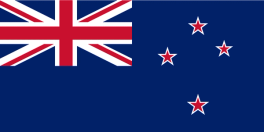This goes
to space
"Return To Sender" Payloads
Welcome to the most diverse Rocket Lab mission yet. The Electron rocket’s 16th flight will feature 30 small satellites all riding to orbit together.
The satellites cover a variety of fields, including testing space-based internet, evaluating methods of removing space debris, examining earthquake prediction methods, and raising money for a children’s hospital.
The APSS-1 satellite from Te Pūnaha Ātea - Auckland Space Institute at The University of Auckland is New Zealand’s first student-built satellite. It will monitor electrical activity in Earth’s ionosphere that could predict earthquakes.
Unseenlab will launch their BRO-2 and BRO-3 satellites to perform maritime surveillance. They will be the first to independently and precisely locate and identify Radio Frequency emitters day or night, in any weather condition, without requiring any special tracking device.
DRAGRACER from TriSept will evaluate the use of a 70 meter long tether designed to control and drag a satellite out of orbit in just 45 days as opposed to the 7-9 years it would take an object to naturally fall from a 550 km orbit.
By far the largest number of satellites on the mission are the 24 Spacebees for Swarm Technologies. Part of an eventual 150 satellite constellation, the Spacebees aim to provide affordable satellite communications to Internet of Things (IoT) devices in remote regions around the world.
The final payload element is a 3D printed gnome, Gnome Chompski, to raise money for the Starship Children’s Hospital in Long Beach, California. $1 (US) will be donated to the Paediatric Intensive Care Unit at Starship Children’s Hospital for every person who watches the launch at www.rocketlabusa.com/live-stream.
On this
rocket
Electron - Return To Sender
Electron is Rocket Lab's answer to the massively growing demand for dedicated small satellite launchers.
The company names each Electron mission after a unique or quirky element of the flight. Past examples include "That's A Funny Looking Cactus" in honor of odd looking cacti in New Mexico where one payload customer was based, and "Running Out Of Fingers" in reference to flight #10 having no more fingers on which to count missions.
The Electron mission for Flight #17 is named “The Owl’s Night Begins” -- a nod to the mission payload’s ability to see day or night.
Rocket Lab recently completed a set of improvements to Electron, one that allows the rocket to take an additional 75 kg to orbit on each mission and another in the form of a wider payload fairing to accommodate larger payloads.
This will be the first mission to use the larger, expanded payload fairing.
Electron flew for the first time in May 2017 and is powered by Rutherford engines -- the first electric-pump-fed engines to power an orbital rocket -- and costs approximately $6 million (USD).
It has two stages, with an option to add a third stage based on mission needs.
It is currently expendable, but Rocket Lab is developing and testing recovery technology and systems on the rocket's first stage.
The “Return To Sender” mission in November 2020 was the first Electron flight where the first stage was recovered after launch.
Image: Rocket Lab
From this
launch site
LC-1A - Māhia Peninsula, New Zealand
November 20, 2020
Rocket Lab's Launch Complex 1A (LC-1A) on the Māhia Peninsula on New Zealand's North Island is part of the company's first launch site, with another under construction at the Mid-Atlantic Regional Spaceport on Wallops Island, Virginia.
An isolated location, the Māhia launch site hosted its first orbital launch attempt of Electron in May 2017 and its first successful orbital launch in January 2018.
Together with Rocket Lab's third launch pad in Virginia, their launch sites can support up to 132 Electron launch opportunities every year.
The Māhia location has two launch pads (LC-1A and LC-1B) and two separate integration hangers to permit simultaneous and protected processing of two payloads for flight at the same time.
LC-1A is the original pad at the Māhia site, with LC-1B launching its first mission in February 2022.
Photo: Rocket Lab
Booster
lands here
Pacific Ocean near New Zealand
November 20, 2020
After separation, Electron’s first stage will attempt a gentle splashdown in the Pacific Ocean under parachute. If successful, the stage will be pulled from the water and brought back to help Rocket Lab make first stage recovery a normal operation.
The first ocean-landing recovery happened on Flight #16, "Return to Sender," in November 2020.
The goal of this second recovery is to test several upgrades to the first stage's flight back into the atmosphere and down to the ocean.
Rocket Lab will use different positions for Electron during descent and an evolved heatshield to help the rocket better survive the extreme temperatures of reentry.
Eventually, Rocket Lab will grab first stages mid-air with a helicopter as they descend under parachute to prevent them from splashing into the highly corrosive salt water ocean.
This is the second of three planned water-landings before helicopter catches begin.
Image: Electron recovery test. Credit: Rocket Lab
Know Before You Go
Rocket Lab's Launch Complex 1 on the Mahia Peninsula on New Zealand's North Island is the company's first of two launch pads, the other being under construction at the Mid-Atlantic Regional Spaceport on Wallops Island, Virginia.
An isolated location, the Mahia launch site hosted its first orbital launch of Electron in May 2017 and first successful orbital launch in January 2018.
The Mahia location has one launch pad (LC-1) and two separate intergration hangers to permit simultaneous and protected processing of two Electron missions' payloads for flight at the same time.
GET THE SUPERCLUSTER APP
THE SUPERCLUSTER PODCAST
A podcast exploring the amazing milestones that changed space history, the wildest ideas that drive our future, and every development in this new Golden Age of Space.
SUPERCLUSTER ON PATREON
Your support makes the Astronaut Database and Launch Tracker possible, and keeps all Supercluster content free.
SUPPORTCOPYRIGHT 2021 SUPERCLUSTER LLC



